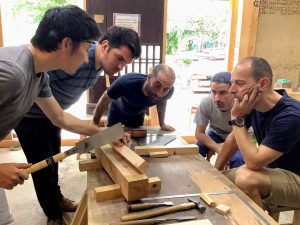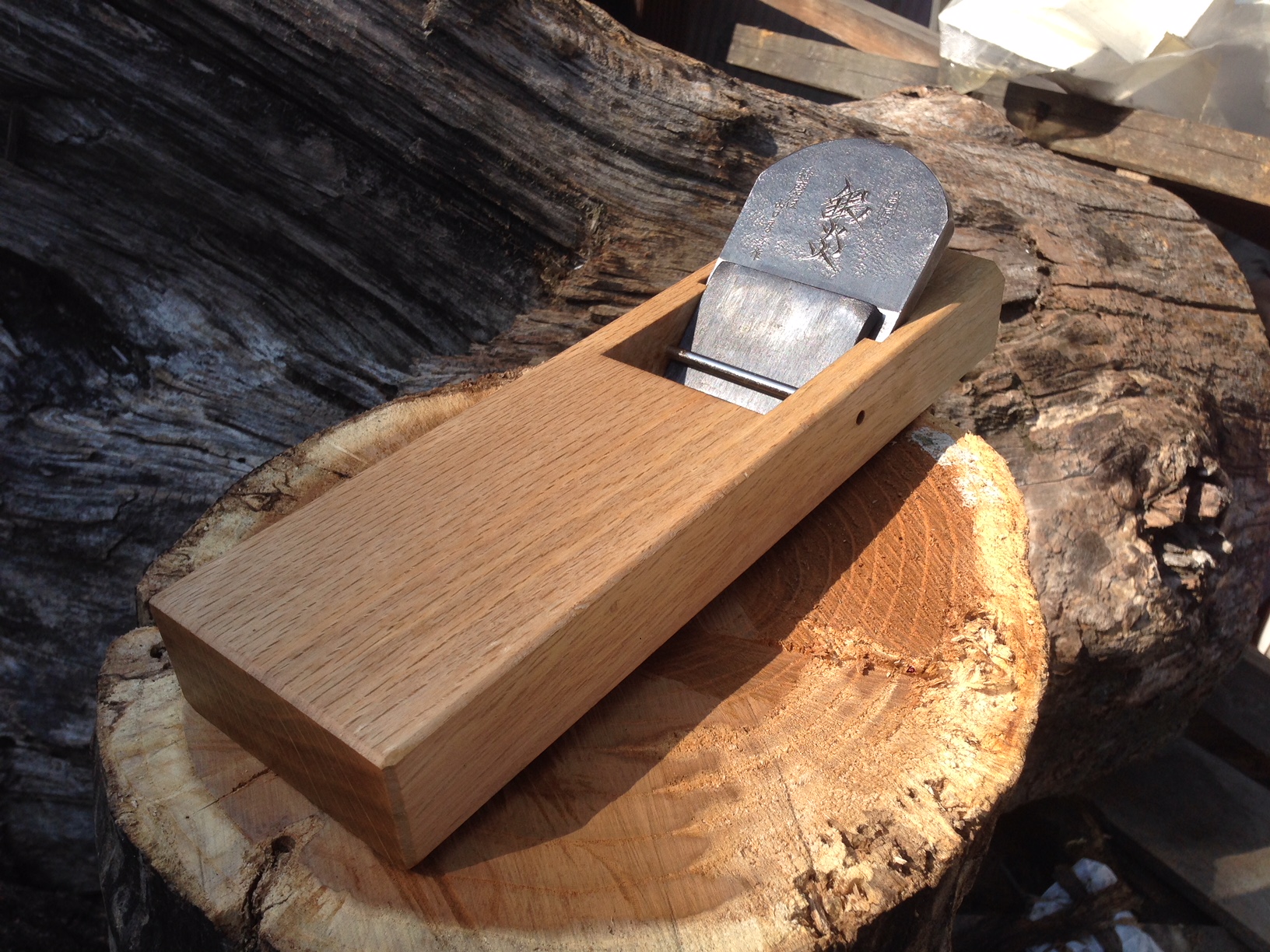
At first look, a Kanna (Japanese hand plane) may look simple. Pretty much a block of wood and a blade.
However, don’t be mistaken by the look. Getting clean, even shavings can be difficult. Actually, more like frustrating.
In order to use the Kanna, the way the tool works must be understood.
Some of the factors that must be recognized and understood are as follows:
- Sharpening – Making sure the Ura (back is completely flat). Ideally, you want the blade to be in a convex shape (the center of the blade higher than the edges). This helps give a seamless finish when working with wider wood (when a few strokes of the Kanna is required).
- Conditioning the Sole – The sole (the underside of the Kanna body) must be conditioned often. For a finishing Kanna, this means two contact points. The contact points must be flat and parallel to one another. Since the body is made of wood, it changes shape quickly, meaning constant conditioning is required.
- Chip breaker – The chip breaker is an essential tool to get a clean finish (it prevents “tear out” from occurring). The Ura (back) must be flat and made to “fit” with the blade. The chip breaker should be as close to the tip of the blade as possible. However, the Kanna can be used without a chip breaker, as long as the “mouth” is tight.
- Wood – Some wood is easier to finish than others. The orientation of the wood plays a big part in getting a smooth, easy pull:
The outer side of the wood: Pull the Kanna top to bottom.
The outer side of the wood with knots: Pull the Kanna bottom to top.
The inner side of the wood: Pull the Kanna bottom to top.
The inner side of the wood with knots: Pull the Kanna top to bottom.
*”Outer side” refers to the side that is closer to the bark and vice versa.
*”Top” refers to the side closer to the top of the tree when it was standing. “Bottom” refers to the side closer to the stump.
- Kezuri Dai (The planing beam) – It should be completely flat. It the Dai (beam) is curved, set it in a way the center of the outward curve is facing up.
I will go into further details in another blog post. But basically, there are several things that must be running in perfect order to get a beautiful finish. If any of the above is neglected, it will produce unsatisfactory results.
A video showing the Kanna in use.
Why do we use the Kanna?
The use of Kanna is getting rare these days with capable machinery and power tools easily available. But what are the benefits of using a Kanna?
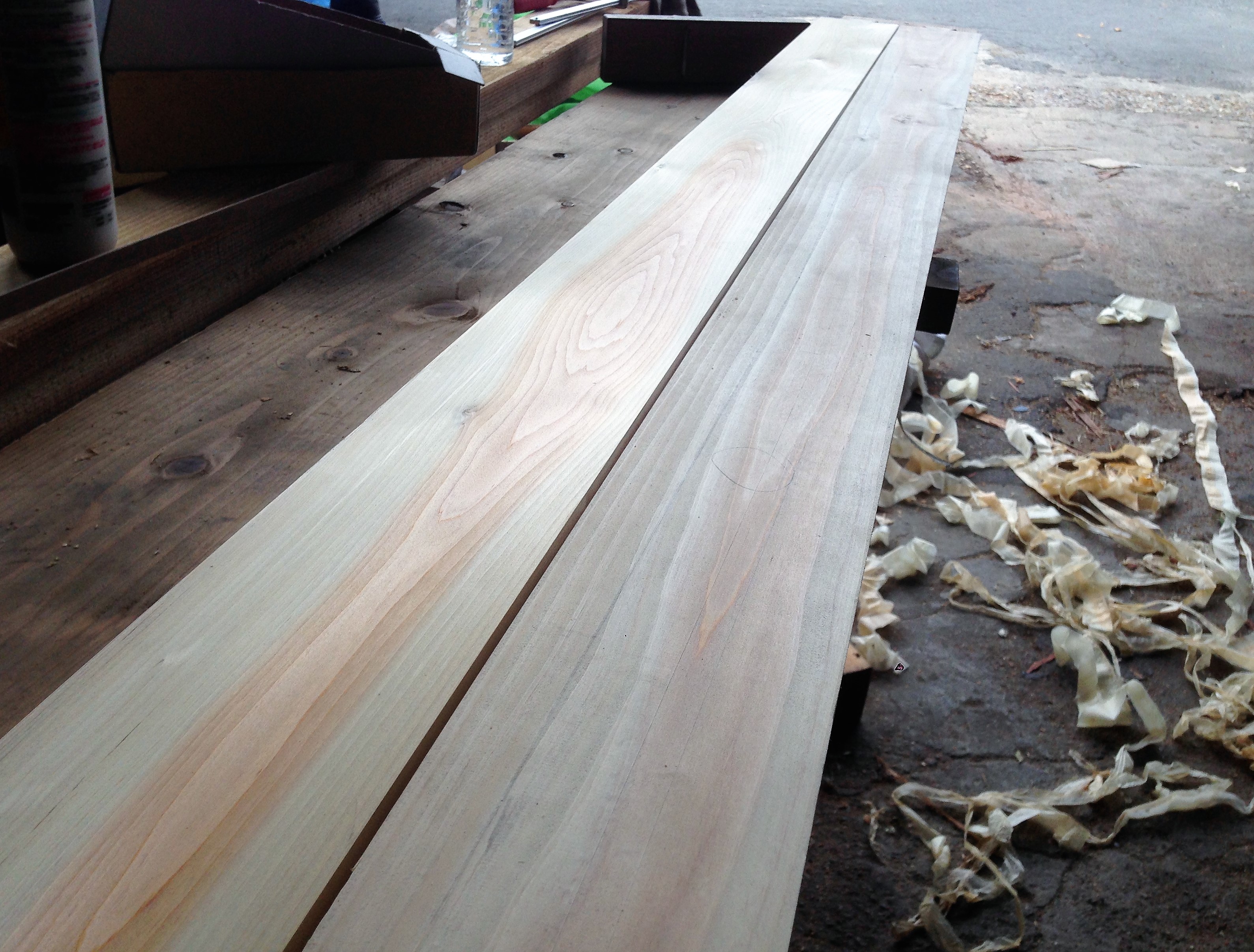
The wood on the left is finished with a Kanna. The one on the right is the state before the Kanna finishing (finished with a planer).
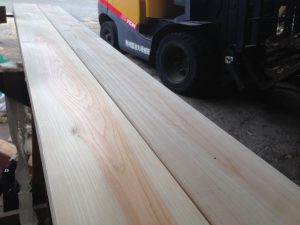
The Kanna gives a shiny, smooth finish and extracts the best of the wood.
Here is a very good video demonstrating the difference between sandpaper finish and Kanna finish.
Even though it may not be visible to the naked eye, sandpaper scratches the surface, while the Kanna slices the wood. This makes Kanna finished surface more water resistant.

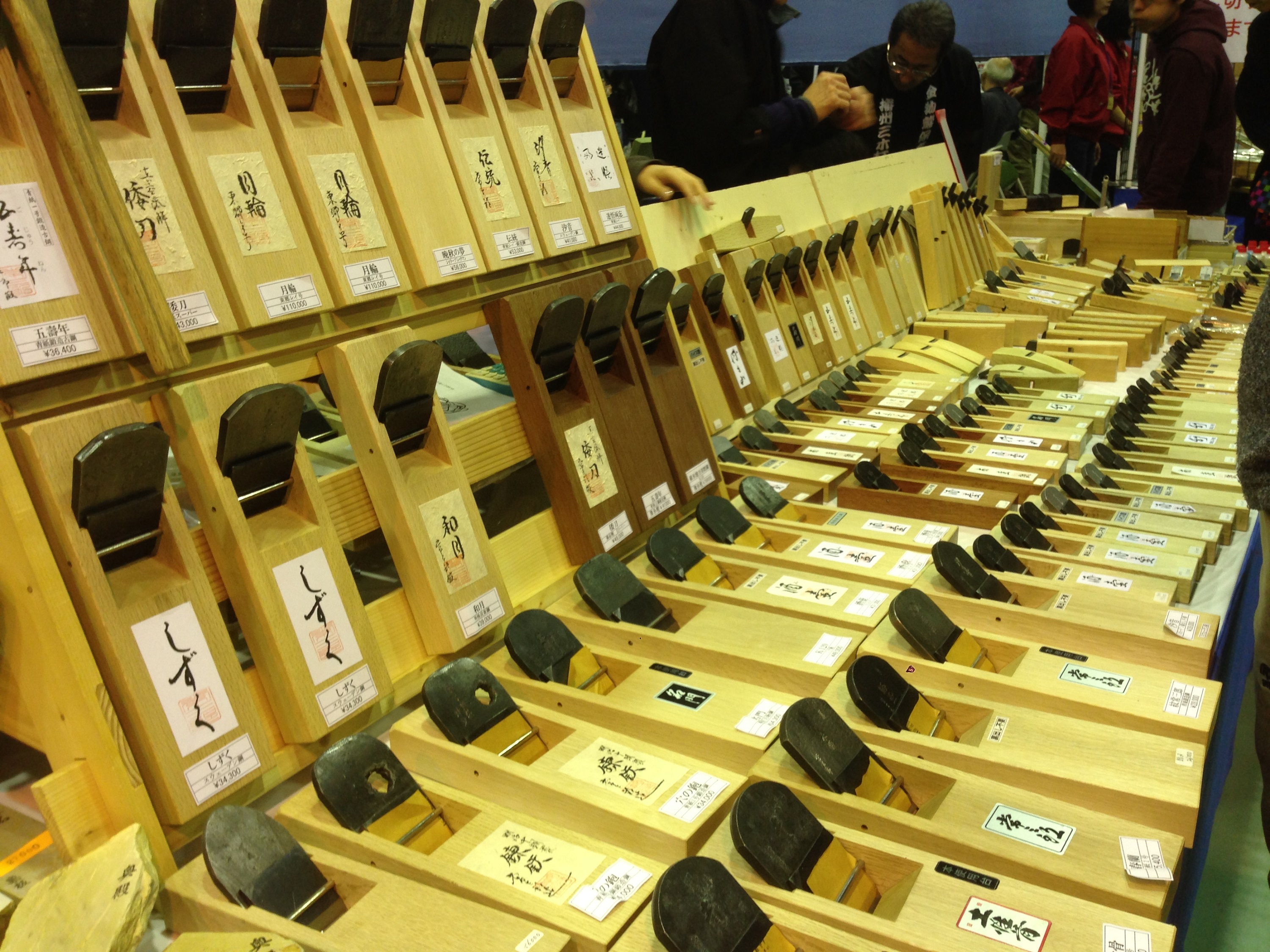
Learning to use the Kanna is actually not too difficult once you get the hang of it. The only difficult thing is understanding the way it works.
I definitely recommend learning directly from someone who is able to use the Kanna. Having an actual teacher (or mentor) makes a tremendous difference.
One word of warning.
Once you are able to use the Kanna smoothly, it can be highly addictive. Kannas also come in various sizes, shapes, and designs (some really interesting!), easily convincing you to collect more than you need!
At Suikoushya, we share traditional Japanese woodworking techniques and skills. Since it is a small group system, we will provide guidance tailored to each individual’s skills, from beginners to woodworking professionals. Please join us!
I look forward to sharing fine woodworking with you.
One month Japanese woodworking classes
